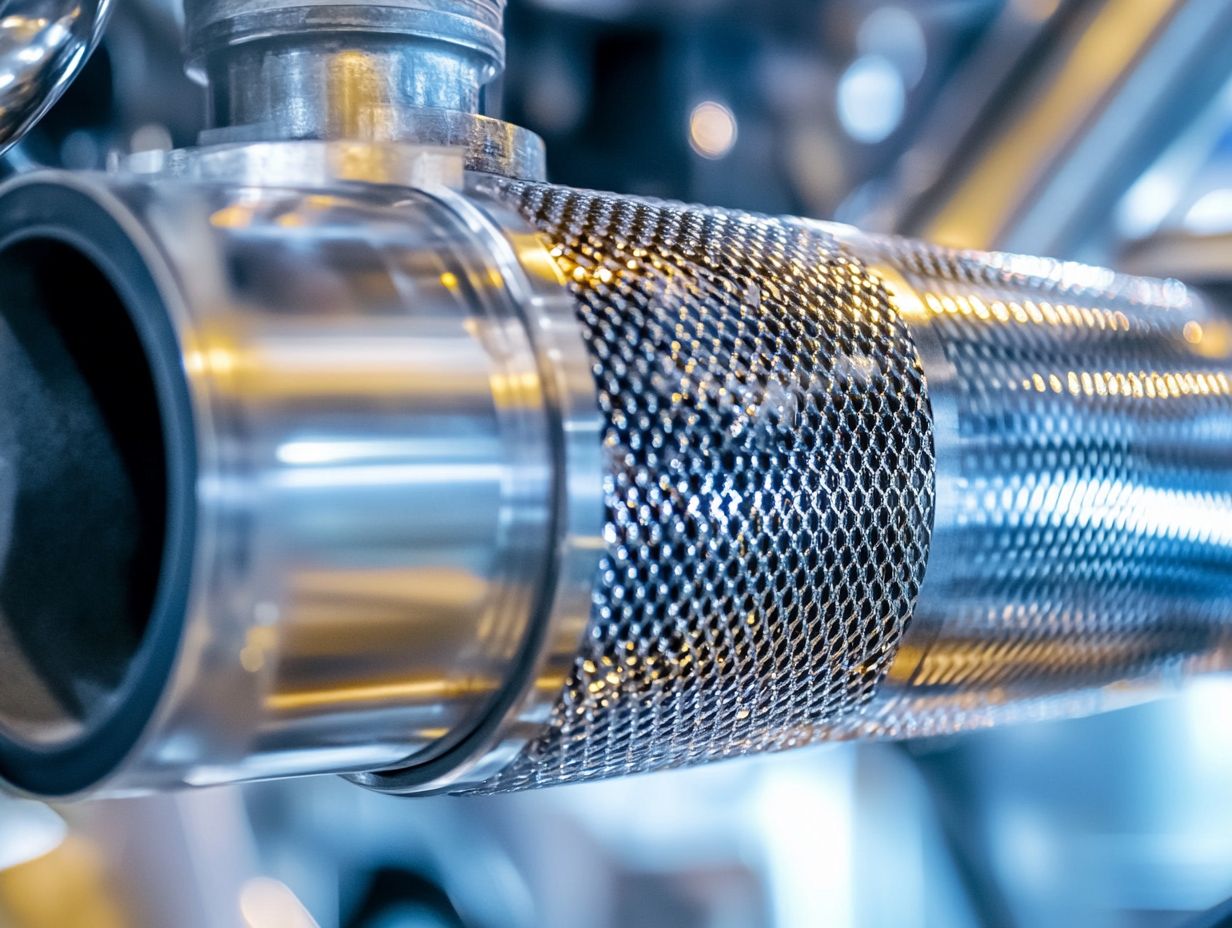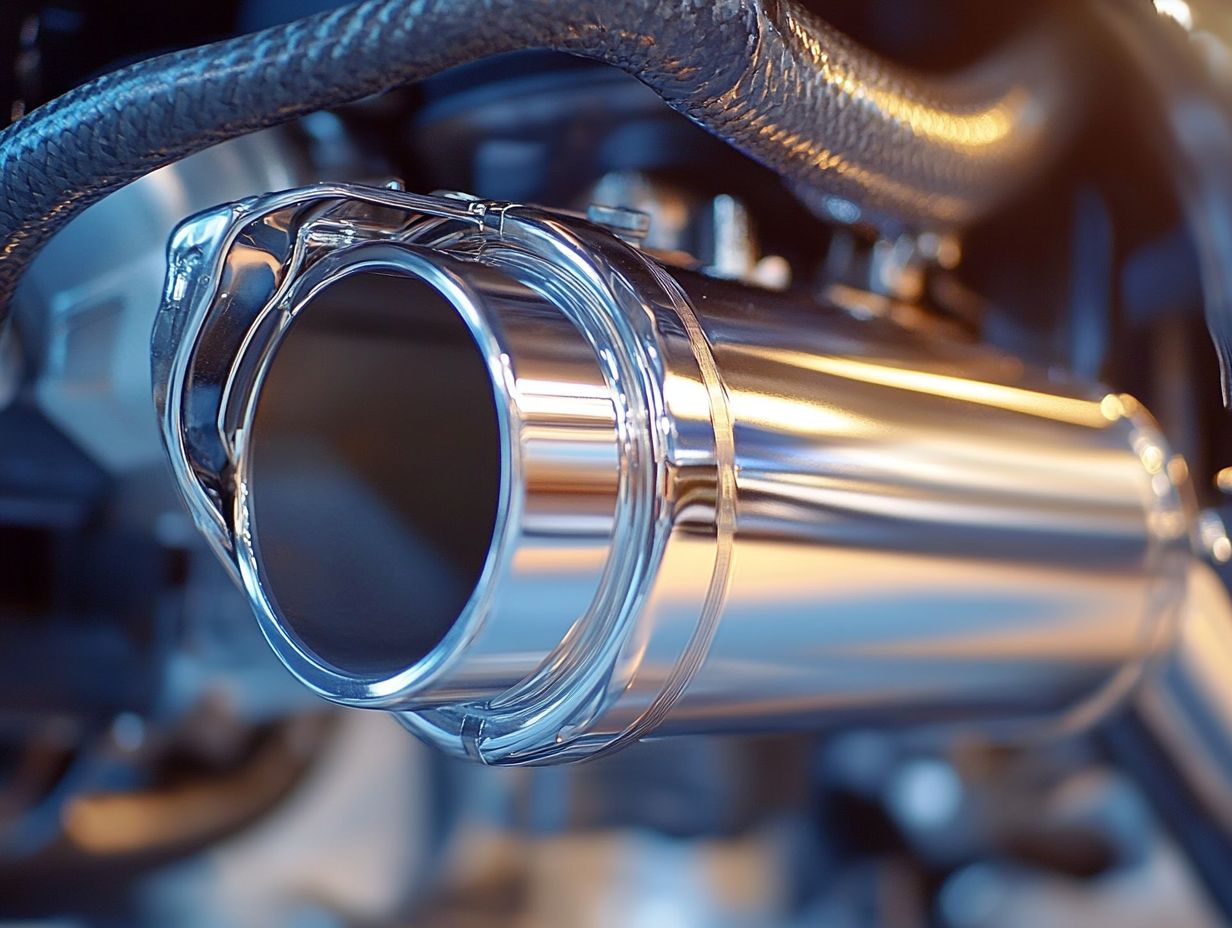The Role of Platinum in the Automotive Industry
Platinum plays a pivotal role in modern automotive technology. It offers durability and efficiency, elevating vehicle performance.
This article delves into the intriguing history of platinum’s use in automobiles. It traces its journey from early applications to its current vital role in exhaust systems and catalytic converters.
You ll explore the advantages and challenges of integrating platinum into automotive design. Consider its future in a rapidly evolving market, especially with the surge of electric vehicles.
Uncover the exciting reasons why this precious metal is vital to the automotive world!
Contents
- Key Takeaways:
- History of Platinum in the Automotive Industry
- Current Applications of Platinum in Cars
- Advantages and Disadvantages of Using Platinum in Cars
- The Future of Platinum in the Automotive Industry
- Frequently Asked Questions
- What is the role of platinum in the automotive industry?
- Why is platinum considered a valuable metal in the automotive industry?
- In what other ways is platinum used in the automotive industry?
- How does the use of platinum in catalytic converters benefit the environment?
- Is there a possibility of platinum being replaced by other metals in the automotive industry?
- How does the demand for platinum in the automotive industry affect its overall market?
Key Takeaways:

- Platinum is a rare and versatile metal used extensively in the automotive industry due to its unique properties and durability.
- The first known use of platinum in cars dates back to the early 1800s, and it has since played a crucial role in various components such as exhaust systems, catalytic converters, and fuel cells.
- Despite its benefits in reducing emissions and improving fuel efficiency, the high cost and limited supply of platinum continue to present challenges for its use in cars.
What is Platinum and Why is it Used in Cars?
Platinum, a precious metal known for its outstanding ability to help clean exhaust gases, is essential in the automotive industry especially in devices that help clean car exhaust and hydrogen fuel cells.
These components are crucial for minimizing emissions from internal combustion engines and meeting strict emissions standards. Platinum’s unique properties are significant in efforts to reduce pollution and the shift toward eco-friendly vehicles, including electric and fuel cell electric vehicles (FCEVs).
This remarkable metal facilitates vital chemical reactions that transform harmful gases, such as carbon monoxide and nitrogen oxides, into less harmful emissions. Ultimately, this improvement enhances air quality.
In hydrogen fuel cells, platinum acts as a catalyst to generate electricity from hydrogen. This process provides an efficient and sustainable energy source.
By integrating platinum into modern automotive technology, manufacturers not only align with global emissions objectives but also support innovations in alternative fuel systems. This makes platinum critical for achieving decarbonization targets while fostering a more environmentally conscious automotive landscape.
History of Platinum in the Automotive Industry
The history of platinum in the automotive industry is marked by its crucial role in devices that help clean car exhaust, especially in response to strict emissions regulations that arose in the 1970s.
As these regulations took effect, South Africa emerged as a leading supplier of this precious metal due to its abundant deposits and advanced mining capabilities.
This development transformed the automotive landscape and fueled the World Platinum Investment Council’s ongoing efforts to highlight the benefits of platinum in modern technology, as well as its potential in the future of platinum in the next decade.
Early Uses and Development
Your journey into the automotive industry begins with platinum, a key player in devices that help clean car exhaust designed to meet emissions standards for internal combustion engines. This role has been vital in advancing automotive technology and enhancing environmental compliance.
From the late 1970s onward, regulations aimed at reducing harmful exhaust emissions gained momentum. This prompted automakers to pursue innovative solutions, with the introduction of catalytic converters marking a significant milestone.
Platinum served as a catalyst, transforming toxic gases like carbon monoxide and nitrogen oxides into much less harmful substances. As emissions standards evolved and became increasingly stringent, the reliance on platinum grew, leading to its widespread use in various vehicle models.
This underscores platinum s essential role not only in boosting vehicle performance but also in advancing broader environmental objectives.
To learn more about the future of automotive technology and sustainability practices in vehicles, stay informed and engaged.
Current Applications of Platinum in Cars
Today, you ll find that platinum plays a pivotal role in the automotive sector, with its versatile applications including catalytic converters, hydrogen fuel cells, and its integration into the rapidly expanding electric vehicle market. This showcases not only platinum s flexibility but also its crucial contribution to enabling cleaner emissions and sustainable energy solutions.
Exhaust Systems

Platinum is an essential element in exhaust systems, primarily found in catalytic converters. These converters play a crucial role in converting harmful gases into less toxic emissions, ensuring compliance with emissions standards.
This precious metal helps chemical reactions happen, transforming pollutants like carbon monoxide and nitrogen oxides into harmless byproducts such as nitrogen and carbon dioxide. By speeding up these reactions, understanding the market dynamics of platinum not only boosts the efficiency of the exhaust system but also gives manufacturers the power to meet and often exceed regulatory requirements aimed at minimizing environmental impact.
With tighter vehicle emissions regulations worldwide, platinum’s role is becoming increasingly important, especially for those in the automotive industry who must skillfully navigate the intricate compliance landscape while pushing the boundaries of sustainable technology innovation. To understand what is the future of platinum prices, it’s crucial to consider these factors.
Catalytic Converters
Catalytic converters are critical components in modern vehicles, leveraging platinum to catalyze reactions that transform harmful pollutants into less harmful substances. Environmental concerns are pushing automotive manufacturers to prioritize these devices to adhere to stringent regulations, thereby reducing the carbon footprint associated with transportation.
The process works by facilitating oxidation and reduction reactions, effectively converting carbon monoxide into carbon dioxide and unburnt hydrocarbons into water vapor, which significantly enhances air quality. However, achieving compliance presents its own set of challenges. Fluctuating platinum availability and rising costs can complicate production, compelling innovators to explore alternative materials and methods that maintain the efficiency of traditional catalytic converters while addressing sustainability concerns.
Fuel Cells
Platinum plays a crucial role as a catalyst in hydrogen fuel cells, facilitating the electrochemical reactions necessary for powering fuel cell electric vehicles (FCEVs). This contribution is pivotal in the automotive industry s transition toward sustainable energy solutions.
This precious metal not only accelerates the reaction between hydrogen and oxygen, generating water and electricity, but also significantly enhances the overall efficiency and performance of these cutting-edge vehicles. As the demand for cleaner transportation solutions skyrockets, platinum’s role in catalytic converters is becoming essential in optimizing fuel cell technology. By boosting reliability and reducing costs associated with these systems, platinum emerges as an invaluable asset for manufacturers.
Looking ahead, advancements in hydrogen fuel cells that leverage this catalyst could transform the automotive landscape, setting the stage for a future dominated by zero-emission vehicles.
Advantages and Disadvantages of Using Platinum in Cars
The use of platinum in automotive applications offers numerous advantages, including its unmatched catalytic efficiency and capability to meet rigorous emissions standards.
However, it is essential to consider the drawbacks as well, such as the high costs associated with platinum and the supply chain challenges that can influence both availability and pricing.
Challenges and Limitations

While platinum has notable advantages in automotive applications, it also presents challenges. High costs, supply chain vulnerabilities, and the urgent need for alternative materials that can replicate its catalytic efficiency are significant concerns.
The skyrocketing prices of platinum, driven by limited mining sources and fluctuating market demand, create hurdles for car manufacturers. Understanding the role of platinum in jewelry design can shed light on the complex nature of the supply chain, which can lead to delays and inflated production costs.
As the automotive industry shifts towards sustainable practices, extensive research is focusing on alternative substances that offer similar catalytic benefits without the financial strain. This search aims to alleviate economic pressures and strengthen supply chain resilience amidst geopolitical tensions and environmental challenges.
Benefits of Platinum
The benefits of using platinum in automotive applications are substantial. Platinum offers exceptional properties that help clean harmful gases, ensuring optimal performance of catalytic converters.
This not only aids in meeting emissions standards but also supports vital decarbonization initiatives. By utilizing this precious metal, harmful pollutants like carbon monoxide and nitrogen oxides are effectively broken down, playing a key role in reducing air pollution.
Its remarkable resistance to corrosion and thermal stability guarantees longevity and reliability, even in harsh environments. This makes it a top choice for manufacturers.
Incorporating platinum into your processes enables compliance with stringent regulatory standards and showcases your commitment to sustainability. As the automotive industry shifts towards greener technologies, recognizing the role of platinum in electronics manufacturing is essential for driving innovation and fostering a cleaner future.
The Future of Platinum in the Automotive Industry
Platinum’s future is bright and full of possibilities! Ongoing research and development efforts focus on enhancing its applications, particularly in electric vehicles and advancing hydrogen technology.
This proactive approach keeps platinum relevant, even as energy landscapes continue to evolve.
Research and Development for New Uses
Research is diving into new applications for platinum in the automotive sector, particularly aimed at enhancing hydrogen fuel cells and other cutting-edge technologies.
Experts are exploring innovative strategies to optimize platinum’s catalytic properties, which can significantly minimize energy losses and enhance overall system performance.
This progress is crucial as the automotive industry increasingly pivots toward sustainable solutions, capturing the rising demand for eco-friendly vehicles.
Researchers are also investigating the integration of platinum into advanced batteries and electric drivetrains, paving the way for more versatile powertrains. By leveraging platinum’s unique characteristics, the industry aspires to meet emissions regulations and contribute to reducing the carbon footprint associated with transportation.
Impact of Electric Vehicles on Platinum Demand
The rise of electric vehicles (EVs) is reshaping demand for platinum. Hydrogen fuel cells are gaining traction as a viable energy source in the automotive sector.
This shift marks a significant change in the platinum market. Applications are expanding beyond traditional uses.
As automakers invest in hydrogen technologies, the role of platinum in catalytic converters and fuel cells will evolve. Be ready for new market trends.
The competitive landscape may force you to rethink supply chains and resource allocations. While some demand may decline, innovative applications will create new opportunities.
Frequently Asked Questions
What is the role of platinum in the automotive industry?

Platinum is crucial in catalytic converters, which help reduce harmful emissions from vehicles.
Why is platinum considered a valuable metal in the automotive industry?
Platinum is rare and expensive. Its effectiveness in reducing emissions and improving fuel efficiency adds to its value.
In what other ways is platinum used in the automotive industry?
Besides catalytic converters, platinum is found in spark plugs, sensors, and various electronic components.
How does the use of platinum in catalytic converters benefit the environment?
Platinum helps convert harmful pollutants like carbon monoxide and nitrogen oxides into less harmful substances. This reduces air pollution and improves air quality.
Is there a possibility of platinum being replaced by other metals in the automotive industry?
Research is ongoing for alternative materials. Currently, platinum remains the most effective and widely used metal in catalytic converters.
How does the demand for platinum in the automotive industry affect its overall market?
The high demand in automotive, jewelry, and electronics drives platinum’s price. Its scarcity makes it a valuable investment.















